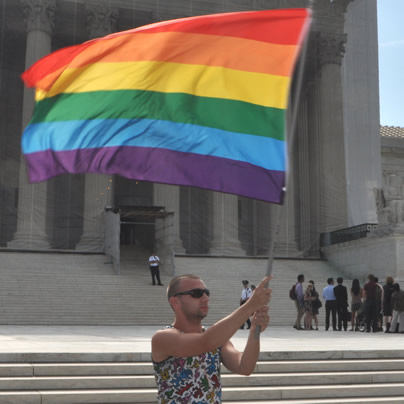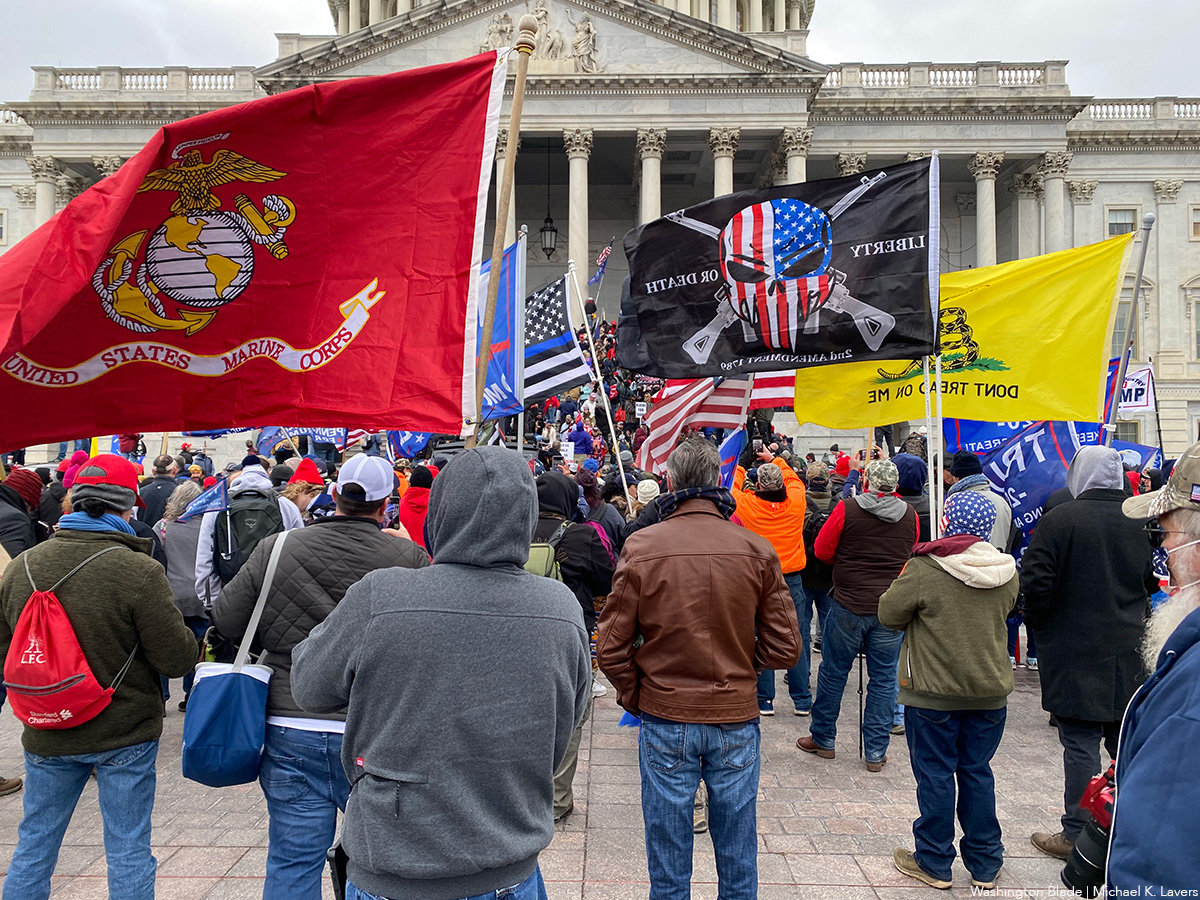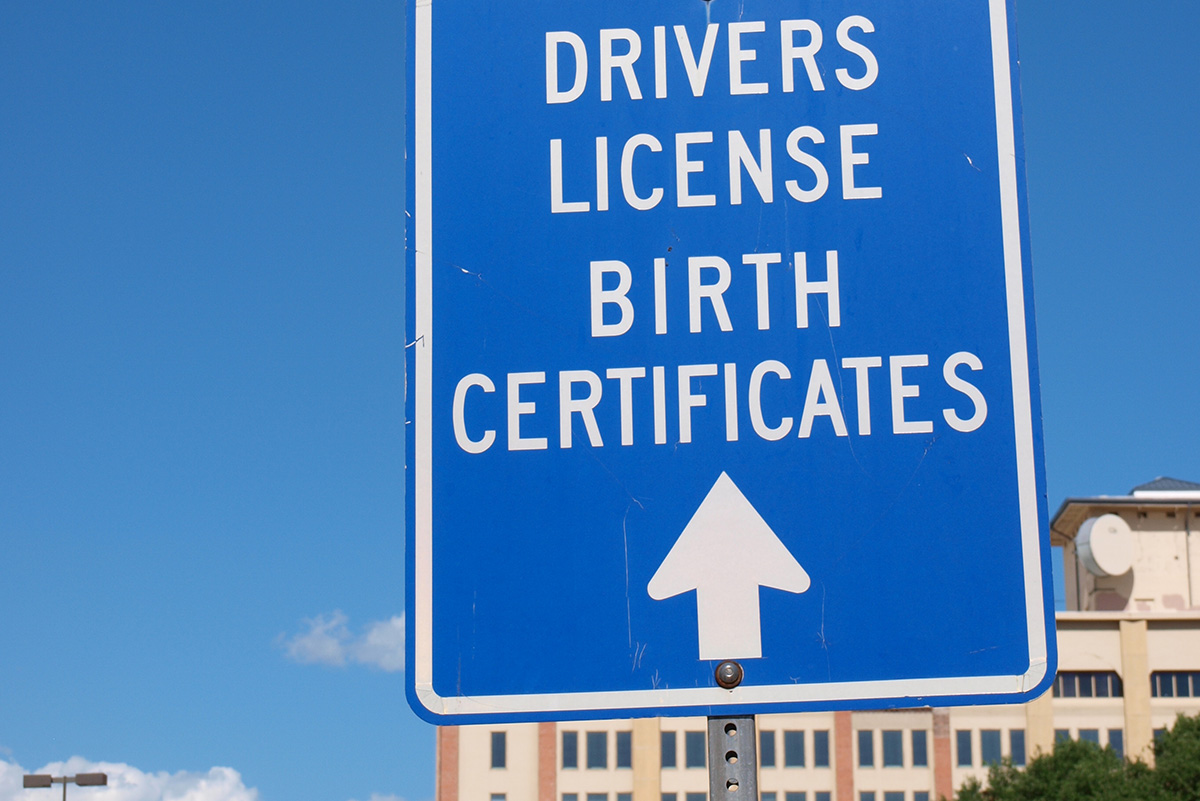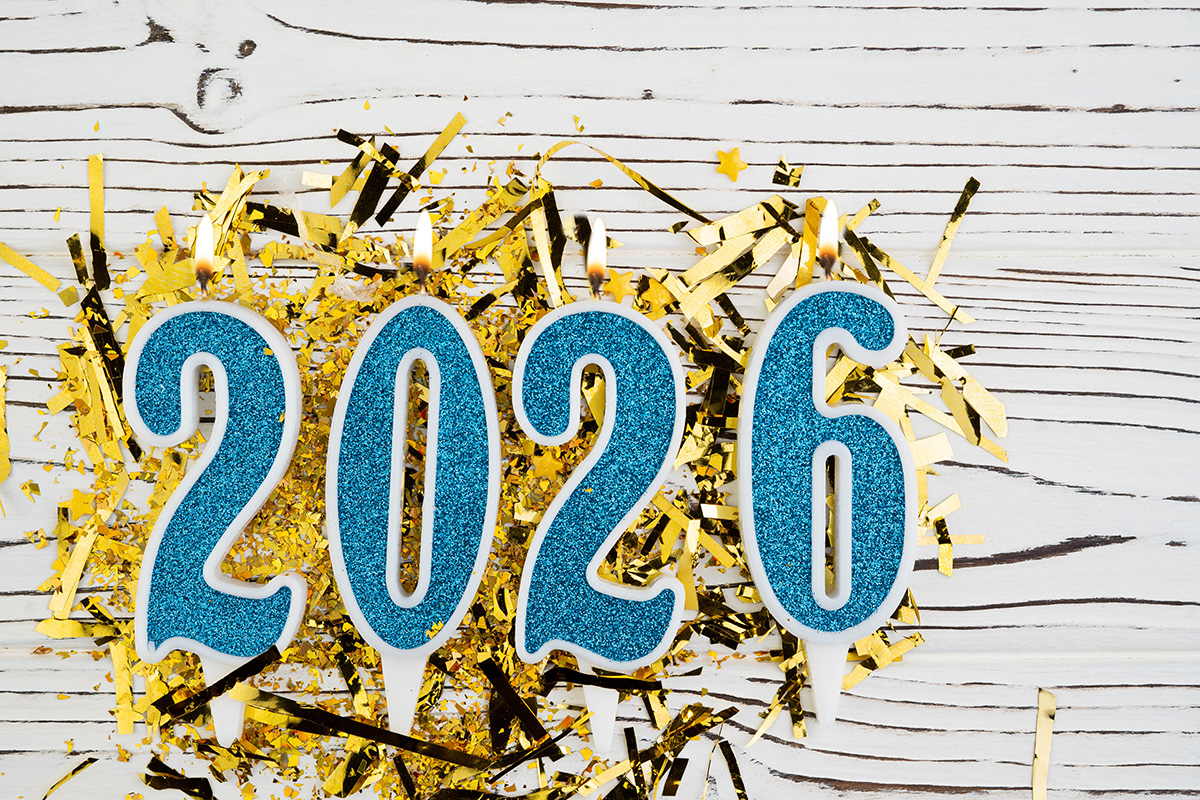Opinions
What the court didn’t do in DOMA case
Many challenges lie ahead in aftermath of historic decisions


On June 26, 2013, the Supreme Court issued two of the most important LGBT-related decisions in U.S. history. (Washington Blade photo by Michael Key)
On June 26, 2013, the Supreme Court issued two of the most important LGBT-related decisions in U.S. history. In Hollingsworth v. Perry the court essentially reinstated marriage for same-sex couples in California (and California has already allowed those marriages) and in Windsor v. United States it held that the federal government is required to recognize marriages between same-sex couples.
It’s also important to note what it did not do. The court did not require that all states recognize valid marriages between same-sex couples, and it did not require that every state allow marriages between same-sex couples. The court left the question of whether same-sex couples have a constitutional right to marry for another day.
There are two major things to consider from the Supreme Court’s marriage decisions. The first is what do these decisions mean for married same-sex couples, and the second is what do these decisions mean for ongoing attempts to eliminate discrimination against the LGBT community? Although it will take some time to find answers, in the few short weeks since the decisions were announced, we have already seen significant movement to recognize all marriages between same-sex couples.
The main question confronting the federal government is whether it will adopt the “place of celebration” (where a couple got married, including foreign countries) or “place of domicile” (where the couple lives) rule to determine whether the marriage is valid. For example, those couples that live in states and jurisdictions that have marriage equality (recognition states), like the District of Columbia and Maryland, will certainly be considered married for all federal purposes as their marriages are valid under both “place of celebration” and “place of domicile” rules. However, married same-sex couples who live in Virginia (a non-recognition state) will have to see whether the “place of celebration” or the “place of domicile” rule will govern the federal benefit they are seeking.
After Windsor, President Obama directed all federal agencies to review their policies to come up with a plan to implement marriage equality on the federal level as soon as possible. A number of federal agencies have already issued their own marriage definition policies. The Office of Personnel Management (OPM) published guidance that says that the “place of ‘celebration’ rule will determine the validity of a marriage for all federal employees. This means that any federal employee married to a same-sex spouse, no matter where the employee lives, is married for federal government purposes.
Federal employees should immediately contact their Human Resources departments to apply for any benefits for which they may now be eligible. The federal government has indicated that the Windsor decision will be considered a “qualifying event” so federal employees have 60 days to revisit their benefit choices.
The United States Citizen and Immigration Services (USCIS) has also said that “place of celebration” will determine the validity of a marriage for immigration purposes. That means that bi-national same-sex married couples, no matter where they currently live, will be treated the same as opposite-sex married couples. In fact, a deportation of a foreign spouse underway prior to Windsor was stopped, and a gay male foreign spouse in Florida has been approved for a green card under the new immigration policy.
Chuck Hagel, the Secretary of Defense, has said that the military will treat all married couples the same, no matter where they got married, using the “place of celebration” rule. This means that military spouses will have rights to health insurance, base housing, ID cards, on-base shopping privileges, burial at Arlington Cemetery and more. Eligibility for Social Security benefits, however, has historically depended on the “place of domicile” rule. We are waiting for further developments in this area.
It seems clear that in the end, the federal government will adopt an across-the-board “place of celebration” rule for eligibility for all federal benefits relating to marriage. Any other policy would be untenable. This policy would give married couples access to more than 1,000 rights and responsibilities on the federal level.
Locally, the University of Maryland has said that as of July 31, 2013, it will treat all married couples, whether same-sex or opposite-sex, equally. Other institutions are also coming out with their own policies on how married same-sex couples will be treated. But, the marriage of a same-sex couple that lives in a “recognition” state (D.C., Maryland and Delaware locally), should be valid for all purposes, state, local and federal. Anything less would be discrimination forbidden under Windsor.
Married couples with children however, should still do second-parent adoptions if they are available, and complete their estate planning as the Windsor decision DOES NOT require all states to recognize any legal relationships based on the couples’ marriages. As before, it is absolutely crucial to obtain court orders granting these legal relationships separate from the marriage.
If you haven’t married, but have been waiting for the fall of DOMA, contact your lawyer to discuss the implications of the Windsor decision for you. Make sure you know all of the implications before you take the big step. If you are married and work for a state government or private employer, and you live in a recognition state — again, D.C., Delaware and Maryland locally — also contact your employer to make sure all of your coverages are what you want. Do this as soon as possible.
Although the Supreme Court cases did not impact the 29 states with constitutional amendments and laws prohibiting marriage equality, Windsor and Perry opened the door for challenges to those laws, and for arguments that those states must recognize valid marriages between same-sex couples. We are already seeing immediate and significant litigation around marriage equality. Marriage equality cases have been filed in Arkansas, Louisiana, Oklahoma, Ohio, and Pennsylvania, and will be filed shortly in Virginia. There is continuing litigation in Michigan, Illinois and New Jersey around these issues.
The fact that same-sex marriages will be recognized on the federal level is, of course, extremely important. But, to me, how the court got to this decision may be even more important because of what the court’s legal analysis means for future cases. Everyone expected DOMA to be struck down, but on the basis of states’ rights — that each state could decide for itself whether it would have marriage equality. But instead of states’ rights, the court based its decision on Equal Protection, a constitutional protection for groups that are targets of social animus. That opens the door for challenges to ANY law discriminating against lesbians and gay men. Even Justice Anton Scalia recognized this. Here’s what he said:
“In my opinion, however, the view that this Court will take of state prohibition of same-sex marriage is indicated beyond mistaking by today’s opinion. As I have said, the real rationale of today’s opinion, whatever disappearing trail of its legalistic argle-bargle one chooses to follow, is that DOMA is motivated by ” ‘bare . . . desire to harm'” couples in same-sex marriages. Supra, at 18. How easy it is, indeed how inevitable, to reach the same conclusion with regard to state laws denying same-sex couples marital status.”
One of the only times I hope he’s right!
Michele Zavos is a long-time lesbian activist attorney and founder and principal of the Zavos Juncker Law Group, PLLC, which practices in all three area jurisdictions.
Opinions
A reminder that Jan. 6 was ‘textbook terrorism’
Capitol attack started an effort to make civic engagement feel dangerous

Jan. 6 taught us what it costs to defend our families and our communities.
Five years ago, Michael Fanone went to work as a Metropolitan Police Department officer and ended the day fighting for his life while defending the United States Capitol.
After Michael spoke publicly about what he witnessed on Jan. 6, the response was not disagreement or debate. It was intimidation. His mother was swatted in a targeted attack.
We are not immediate family, but we spend holidays together. Our lives overlap. And that was close enough.
Unpaid pizza deliveries were sent to our homes. Strangers showed up demanding payment. Threats followed, by phone and online. The message was unmistakable: Speaking out against Donald Trump would come at a cost, not only for you, but for your family.
As Mayor Muriel Bowser said at the time, Jan. 6 was “textbook terrorism.”
What made this harder was not only the intimidation itself, but the absence of any clear support once the headlines faded. One of us was a Metropolitan Police officer. The other served on the D.C. State Board of Education. If anyone should have known where to turn or had access to guidance or protection, it should have been us. Instead, there were no clear resources to help families deal with harassment, no guidance on what to do when threats followed us home, and no sense that anyone had our backs once the attention moved on. We were left to absorb it quietly and figure it out ourselves.
That experience changed how I understood Jan. 6, not as a single violent day, but as the start of a longer effort to make civic engagement feel dangerous and isolating. You do not have to silence everyone. You only have to make examples of a few.
I know many people in this city recognize that feeling now. The sense that speaking out carries risk. That you cannot afford to lose your job. That scrubbing your social media is safer than risking the consequences. In this context, silence is not necessarily apathy. It is self-preservation.
As a school board member and healthcare navigator, I hear it from families who decide to keep their children at home rather than send them to school. I hear it from families who decide not to re-certify their Medicaid, not because they are ineligible, but because they fear being targeted for using public benefits. These are not abstract concerns. They are everyday decisions shaped by fear of retaliation, fear learned by watching what happens to people who speak out.
More people in our city are now asking the same question my family was forced to confront on Jan. 6: Who will back you when the pressure does not stop, or when it follows you home after work?
This is where the city should step in and say clearly: We will have your back.
Yes, D.C. operates under real constraints. We lack statehood. We cannot deploy the National Guard without federal approval. Congress can overturn our laws.
But even within those limits, choices still matter. Across D.C., neighbors are walking children to school when families fear being targeted by ICE. Passersby are stopping to question why someone is being profiled or detained. These acts do not eliminate risk. They redistribute it, often making the difference between retreat and resistance.
This is not about asking everyone to be louder or braver on their own. It is about whether we are willing, as a city and a community, to make it safer for people to stand up to a bully. That means building real support around those who take risks, so they are not left isolated afterward. It means treating endurance as a shared responsibility, not an individual test.
Our city may not have all the powers it would have as a state, but we still have choices. Right now, residents and city workers who face threats are left to navigate a maze of agencies, hotlines, and informal advice on their own. That gap is a policy choice, and it does not have to remain one. There should be one clear place to go when harassment or threats occur, a single point of contact that helps document what’s happening, connects people to existing resources, and coordinates a response across agencies. Not a new bureaucracy, but a clear front door. The message it would send matters as much as the help itself. You are not on your own, and the city is paying attention beyond the news cycle.
Jan. 6 did not end at the Capitol. It moved into our neighborhoods, our families, and our daily choices. The work now is not to demand a single expression of courage, but to make it safer for all of us to stand up in our own way, together.
Allister Chang is a member of the D.C. State Board Of Education from Ward 2.
Opinions
A dangerous precedent on trans rights in Texas
State compiling list of those who have updated gender on driver’s licenses

Recent reporting from Texas Standard revealed what should alarm every American who values privacy, civil rights, and constitutional restraint: the state of Texas is compiling a list of transgender residents who have attempted to update the gender marker on their driver’s licenses.
Under a policy quietly implemented after August 2024, the Texas Department of Public Safety stopped accepting court orders or amended birth certificates as valid documentation for gender marker changes. Instead, DPS employees were instructed to forward the names and identifying information of applicants seeking such updates to a dedicated internal email channel labeled “Sex Change Court Order.” Those records, which include sensitive personal information, are now being collected internally by the state.
Texas officials have not offered a clear explanation for why this information is being gathered, how long it will be retained, or what it will ultimately be used for. That lack of transparency is deeply troubling on its own. But in the broader context of Texas’s recent legislative trajectory on transgender rights, the implications are far more serious. This is not merely a bureaucratic shift. It is the creation of a targeted registry of transgender people.
The discriminatory nature of this practice is difficult to ignore. Governments are generally prohibited from singling out individuals based on protected characteristics for special monitoring or record-keeping. Since the Supreme Court’s decision in Bostock v. Clayton County, discrimination against transgender people has been understood as a form of sex discrimination under federal law. Compiling a list of people solely because they sought to align their identification documents with their gender identity runs directly counter to that principle.
Even states with restrictive policies around gender marker changes have historically focused on procedural barriers rather than surveillance. Texas has crossed a new threshold by moving from denial to documentation. The state is no longer just refusing recognition; it is actively cataloging those who seek it.
This practice also represents a profound violation of privacy. Driver’s license records contain some of the most sensitive personal data the government holds. Associating that data with a person’s transgender status without consent or statutory justification creates obvious risks, particularly in a political environment where transgender people are already subject to heightened hostility.
The chilling effect is unavoidable. Trans Texans will now have to weigh whether engaging with basic state services could land them on a government list. That fear will discourage people from updating identification, interacting with public agencies, or asserting their legal rights at all. When a government’s actions deter a specific population from participating in civic life, the harm extends well beyond administrative inconvenience.
What makes this development especially dangerous is how neatly it fits into a broader pattern. Texas lawmakers have spent years advancing legislation that narrows the legal definition of sex, restricts access to gender-affirming care, and limits the recognition of transgender people across public institutions. The creation of this list does not stand apart from those efforts; it complements them.
Once such a database exists, it becomes a tool. Data collected today for “administrative review” can be used tomorrow to justify new exclusions, enhanced scrutiny, or punitive enforcement. History shows that registries built around identity rarely remain benign. They become mechanisms of control.
Other states are watching. Texas has increasingly functioned as a testing ground for anti-trans policy, with lawmakers elsewhere ready to replicate measures that survive legal or political backlash. If compiling a list of transgender residents becomes normalized in Texas, it will not remain isolated. Red states searching for new ways to restrict trans lives will take notice.
The constitutional issues raised by this practice are significant. The Equal Protection Clause forbids states from treating similarly situated individuals differently without sufficient justification. Singling out transgender people for special tracking invites heightened scrutiny. There are also serious Fourth Amendment concerns when the government collects and retains sensitive personal information without a clear, lawful purpose.
At stake is not just the safety of transgender Texans, but the integrity of government itself. If states are permitted to quietly assemble lists of disfavored populations, the precedent does not stop with gender identity. It becomes easier to rationalize similar measures against other groups, under different political conditions.
This moment demands scrutiny and resistance. Texas must be compelled to explain why this data is being collected, how it will be protected, and whether it will be shared across agencies. Civil rights organizations and federal authorities should treat this practice as a serious warning sign, not a minor administrative quirk.
The United States has made meaningful progress toward recognizing the rights and dignity of transgender people, but that progress is fragile. It can be reversed not only through sweeping legislation, but through quiet bureaucratic maneuvers that evade public attention.
A list of transgender citizens is not a neutral administrative artifact. It is a signal. It tells a vulnerable population that their government is watching them differently, recording them differently, and preparing to treat them differently. That should concern everyone, regardless of where they live.
If we allow this to stand, Texas will not be the last state to do it.
Isaac Amend is a writer based in the D.C. area. He is a transgender man and was featured in National Geographic’s ‘Gender Revolution’ documentary. He serves on the board of the LGBT Democrats of Virginia. Contact him on Instagram at @isaacamend

One year gone, another just beginning. The best of all worlds would be no regrets about how you lived your life in 2025, and a positive outlook for 2026. I wish that for all of you, along with good health and happiness.
For me, 2025 was a good year. No new health issues as long as I don’t consider my recent root canal. Friends kidded if that was my worst, life is OK. But then they didn’t sit in the dentist chair for three hours. As you are aware, if reading this in the Blade, I write about politics. The felon in the White House ensures there is always something to write about. Unfortunately, it’s 99% bad. He recently said he will interfere in Europe, and support far-right parties. Not surprising for him, and his fascist leaning administration. Again, as you know, I usually refer to him as ‘The felon,’ my most polite name for him. He has a slew of scary incompetents around him, but truly frightening are the fascists like Russell Vought at OMB who wrote Project 2025, and his personal Goebbels, Stephen Miller. They are proposing policies that are destroying lives. While many don’t impact me, they create a certain amount of guilt in how I live my life. I am a white, privileged, cisgender, older, male and can escape the immediate repercussions of some of the worst things happening in the world today. Nearly all perpetrated, or supported, by the evil SOB in the White House. There, another name for him.
As long as my Social Security keeps coming, and Medicare still pays 80% of my doctor bills, I should be OK. In 2025, I continued to join friends every morning for coffee. In D.C. at Java House; in Rehoboth Beach, it’s The Coffee Mill, owned by my good friends Mel Damascena and Bob Cartwright.
My regular column allows me to vent and comment on the world. My second column is the Blade’s Comings & Goings column. It lets me share the successes of so many in the LGBTQ community. We have a truly amazing community, of which I am so proud to be a part. In 2025, I also began my second book, this one on politics, but don’t hold your breath for a publication date. I am also a theater reviewer for the Georgetown Dish. I get to see as many plays as I like, and share thoughts about them. Mind you, I call myself a reviewer, not a critic. I always try to find something nice to say about every production, even if I don’t recommend others see it. Maybe a good actor, great scenic designer, always something good even in a bad production.
I am fortunate to continue to travel. Now it’s on cruise ships. Great to unpack once, and know where the bathroom is. This past year I went on two cruises, and the Blade was kind enough to publish my blogs. One, a bucket list cruise, something I wanted to do for over 40 years, to the Norwegian Fjords, and the Arctic. Twelve days on Celebrity APEX out of Southampton. It was amazing, and met all my expectations. The second was my recent transatlantic cruise, something I do annually, with a large group of friends from around the country, and world. It was 13 nights from Rome to Ft. Lauderdale. I’ve already booked next October; 16 nights on Celebrity XCEL, Barcelona to Miami. I even have two cruises booked in 2027, one a transatlantic, the other a river cruise on the Douro, in Portugal. Feel free to join me if you like cruising, at least the kind done on the water.
All-in-all, 2025 was a good year. I look forward to the same in 2026. More travel, including a barge trip in June from Lyon to Paris, through the canals of Burgundy. I hope for good health, time with good friends, and more writing. In addition, I promise my friends, and community, I will continue to fight with, and for you, trying to make our lives better. I will demonstrate against the felon and his policies, work hard to elect Democrats, especially my friend Zach Wahls, running for United States Senate in Iowa. I will stand up, and speak out, for my trans friends, and friends who are immigrants, all threatened by the felon.
I ask you to join me and do everything we can to take back our country and look forward to maybe seeing many of you on a cruise, but definitely on the battle lines, here at home. Together, we can work in 2026 and beyond, to ensure everyone can live the life they want, and deserve; in what again must be the land of the free and home of the brave.
Peter Rosenstein is a longtime LGBTQ rights and Democratic Party activist.



















